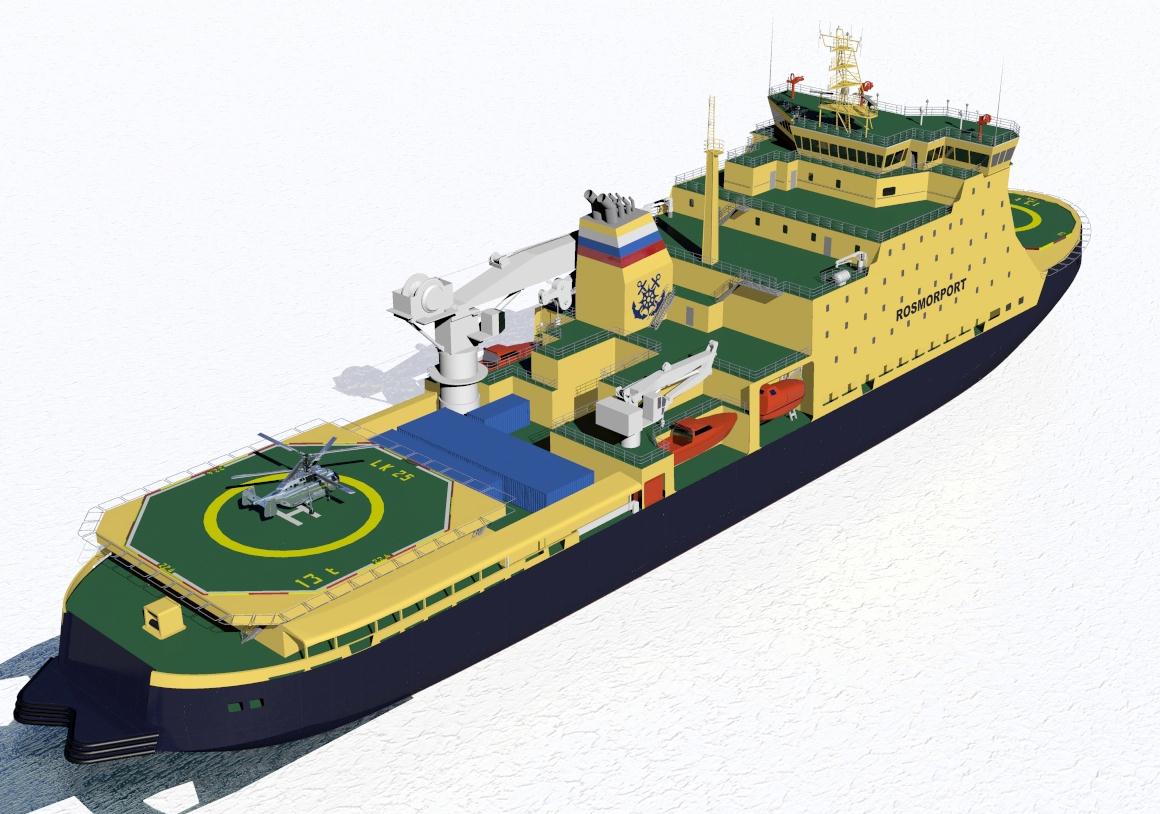Maritime Industry Records Increasing Demand for Icebreakers
Posted on Apr 5th, 2013 with tags Demand, Icebreakers, Increasing, Industry, Maritime, News by topic, Records.

With energy and minerals being increasingly discovered in Arctic regions, and the retreat of sea ice encouraging the greater use of both the Northern Sea Route and the North West Passage, there is a new demand for icebreakers and ice-strengthened tonnage capable of working in these demanding regions.
There is also increased demand for icebreaking capabilities in both the Gulf of Finland and Gulf of Bothnia in the Baltic regions, where there is increasing maritime traffic which can be handicapped by exceptionally cold Winters.
The world’s most powerful icebreakers are nuclear craft operated by Russia and it is this country which is currently busiest in enlarging its polar icebreaking capability, with new nuclear vessels of advanced design, capable of year-round operation in Arctic regions. Known as the LK-series, three of these ships, with a new reactor design and with a massive power installation capable of 60 MW are being built, all being delivered by 2020.
The design of these ships provides for a far wider hull than earlier breakers, so that they will be able to break a far wider channel for the wider ships expected to operate in the Arctic regions in coming years. Additionally, when they are breaking ice in the approaches to the Siberian ports, they will be able to reduce their draught to work in shallower water that would normally be possible for large vessels. It is anticipated that they will be able to break ice of more than 3 metres thick, and will be untroubled by Winter temperatures, which plummet to minus 40 degrees C.
Another breakthrough design building in Finland for Russian clients is an “oblique” icebreaker, which will be able to operate sideways, to provide a 50 metre wide channel for a following ship. This curious ship, which will operate with tankers in the Gulf of Finland, will be able to break 0.6 metre Baltic ice at a speed of 6 knots with extraordinary manoeuvrability provided by two “propulsors” at the stern and one at the bow, enabling the ship to turn through 360 degrees “on the spot” in ice. Known as the ARC-100, the diesel-electric craft will also act as a tug and will be able to tow sideways.
A number of other large diesel-electric icebreakers capable of Arctic operations are also being built in Finland. These multi-purpose craft, which can operate as fire-fighting, salvage and rescue vessels, will be able to break ice of up to 1.5 metre thickness and will be primarily employed in escorting large vessels through the Northern Sea Route. It has been estimated that because of retirements and disposal of many older Russian icebreakers in the next few years, the country will need to build up to thirty more to cope with the increasing demands from the Arctic sea route, the Baltic traffic and to support energy and mineral projects in the frozen North. Other Baltic states have icebreaker replacement projects in hand, while US and Canadian governments are busily considering their Arctic responsibilities.
Source from worldmaritimenews
HEADLINES
- Do shipping markets want Biden or Trump for the win?
- All 18 crew safe after fire on Japanese-owned tanker off Singapore
- Singapore launching $44m co-investment initiative for maritime tech start-ups
- Cosco debuts Global Shipping Industry Chain Cooperation Initiative
- US warns of more shipping sanctions
- China continues seaport consolidation as Dalian offer goes unconditional